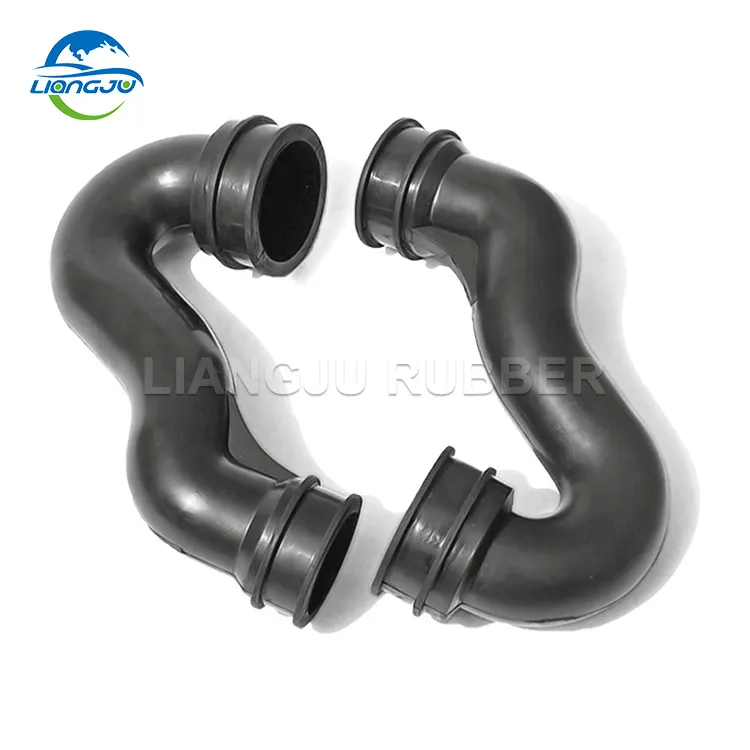How to Choose the Right Rubber Hose for Your Application
2024-07-27
Introduction
Selecting the right rubber hose is crucial for ensuring the efficiency, safety, and longevity of your equipment and operations. With various types of rubber hoses available, each designed for specific purposes, it’s essential to understand the factors that influence your choice. In this blog, we will guide you through the key considerations to help you choose the right rubber hose for your application.

Key Factors to Consider
1. Material Compatibility
Different rubber compounds offer varying degrees of resistance to chemicals, temperature, and pressure. Understanding the fluid or gas the hose will convey is critical:
- Nitrile Rubber (NBR): Best for oil and fuel applications.
- EPDM Rubber: Ideal for water, steam, and outdoor use due to its resistance to heat, ozone, and weather conditions.
- Silicone Rubber: Suitable for high-temperature applications and flexible in low temperatures.
- Natural Rubber (NR): Excellent for abrasion resistance but limited in chemical resistance.
2. Pressure and Temperature Ratings
Ensure the hose can withstand the maximum pressure and temperature it will be exposed to. Hoses are rated for their working pressure and temperature ranges:
- Working Pressure: The maximum pressure the hose can handle during regular operation.
- Burst Pressure: The maximum pressure the hose can withstand before failure, typically four times the working pressure.
- Temperature Range: The range within which the hose can operate safely without degrading.
3. Size and Length
Choosing the correct diameter and length is vital for ensuring efficient flow and minimizing pressure loss:
- Inner Diameter (ID): Must match the fittings and ensure adequate flow rate.
- Outer Diameter (OD): Important for fitting clamps and fittings.
- Length: Should be sufficient to reach between connection points without stretching or kinking.
4. Flexibility and Bend Radius
Consider the required flexibility and minimum bend radius of the hose:
- Flexibility: Essential for applications involving movement or vibration.
- Bend Radius: The smallest radius the hose can bend without kinking or damaging, crucial for installations with tight spaces.
5. Abrasion and Environmental Resistance
Evaluate the hose’s resistance to abrasion, ozone, UV light, and other environmental factors, especially for outdoor or harsh environments:
- Abrasion Resistance: Necessary for hoses exposed to wear and friction.
- Ozone and UV Resistance: Important for hoses used outdoors or in sunny conditions.
6. Compliance and Certifications
For certain industries, it’s essential to choose hoses that meet specific standards and certifications:
- Food and Beverage: Hoses should comply with FDA or USDA regulations.
- Chemical Handling: Compliance with ISO or ASTM standards may be required.
- Automotive and Aerospace: Industry-specific certifications ensure safety and performance.
Common Types of Rubber Hoses
1. Fuel Hoses
Designed to handle fuels and oils, these hoses are typically made from nitrile rubber for excellent resistance to hydrocarbons.
2. Radiator and Coolant Hoses
Made from EPDM rubber, these hoses can withstand high temperatures and are used to carry coolant in automotive and industrial engines.
3. Air and Water Hoses
Flexible and durable, these hoses are suitable for transferring air and water in industrial and construction applications.
4. Hydraulic Hoses
Reinforced with braided wire, these hoses can handle high-pressure hydraulic fluids used in heavy machinery and equipment.
5. Chemical Hoses
Constructed from specialized rubber compounds, these hoses can resist corrosive chemicals and solvents, ensuring safe transfer of hazardous substances.
Maintenance and Care Tips
1. Regular Inspections
Inspect hoses regularly for signs of wear, cracks, leaks, or bulges. Early detection of issues can prevent failures and extend hose life.
2. Proper Storage
Store hoses in a cool, dry place away from direct sunlight and chemicals. Coiling hoses properly can prevent kinks and damage.
3. Correct Installation
Ensure hoses are installed without twisting or stretching. Use appropriate fittings and clamps to secure connections and prevent leaks.
4. Cleaning and Flushing
Regularly clean and flush hoses to remove contaminants and prevent buildup. Use compatible cleaning agents to avoid damaging the hose material.
Conclusion
Choosing the right rubber hose involves careful consideration of material compatibility, pressure and temperature ratings, size, flexibility, and environmental resistance. By understanding these factors and selecting hoses that meet specific requirements and industry standards, you can ensure efficient and safe operation. Proper maintenance and care further enhance hose longevity and performance, making them a reliable component in your applications.


